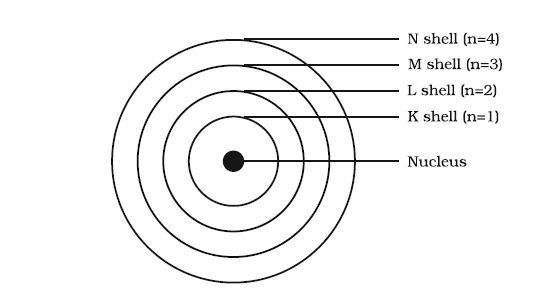12th Grade > Mathematics
APPLICATION OF DERIVATIVES MCQs
Total Questions : 58
| Page 1 of 6 pages
Answer: Option A. -> Cut at right angles
:
A
x3−3xy2+2=0...(1)3x2y−y3−2=0...(2)
On differentiating equations (1) and (2) w.r.t x, we obtain
(dydx)c1=x2−y22xyand(dydx)c2=−2xyx2−y2
Since m1.m2=−1.Therefore the two curves cut at right angles.
Hence (a) is the correct answer.
:
A
x3−3xy2+2=0...(1)3x2y−y3−2=0...(2)
On differentiating equations (1) and (2) w.r.t x, we obtain
(dydx)c1=x2−y22xyand(dydx)c2=−2xyx2−y2
Since m1.m2=−1.Therefore the two curves cut at right angles.
Hence (a) is the correct answer.
Answer: Option C. -> 43
:
C
Let OC be the wall. Let AB be the position of the ladder at any time t such that OA =x and OB=y. Length of the ladder AB =20 ft.
In ΔAOB,

x2+y2=(20)2
⇒2xdxdt+2ydydt=0∴dydt=−xydxdt=−x√400−x2.dxdt=−16√400−(16)2.dxdt=−43dxdt
-ve sign indicates, that when X increases with time, y decreases. Hence, the upper end is moving 43 times as fast as the lower end.
:
C
Let OC be the wall. Let AB be the position of the ladder at any time t such that OA =x and OB=y. Length of the ladder AB =20 ft.
In ΔAOB,

x2+y2=(20)2
⇒2xdxdt+2ydydt=0∴dydt=−xydxdt=−x√400−x2.dxdt=−16√400−(16)2.dxdt=−43dxdt
-ve sign indicates, that when X increases with time, y decreases. Hence, the upper end is moving 43 times as fast as the lower end.
Answer: Option A. -> 5.0267
:
A
Let y = x1/3,x=125 and x+Δx=127. Then,
dydx=13x2/3andΔx=0
When, x = 125, we have
y=5anddydx=175
∴y=dydxΔx⇒Δy175×2=275
∴(127)1/3=y+Δy=5+275=5+83×1100
⇒(127)1/3=5+(2.6667)100=5.02667=5.0267
Hence (a) is the correct answer.
:
A
Let y = x1/3,x=125 and x+Δx=127. Then,
dydx=13x2/3andΔx=0
When, x = 125, we have
y=5anddydx=175
∴y=dydxΔx⇒Δy175×2=275
∴(127)1/3=y+Δy=5+275=5+83×1100
⇒(127)1/3=5+(2.6667)100=5.02667=5.0267
Hence (a) is the correct answer.
Answer: Option A. -> only one real root which is positive if a > 1, b
:
A
f'(x) = - cosx + a, if a > 1,then f(x) entirely increasing. So f(x) =0 has only one real root, which is positive if f(0) < 0 and negative if f(0) > 0.
Similarly when a < -1. Then f(x) entirely decreasing. So f(x) has only one real root which is negative if f(0) < 0 and positive if f(0) > 0
:
A
f'(x) = - cosx + a, if a > 1,then f(x) entirely increasing. So f(x) =0 has only one real root, which is positive if f(0) < 0 and negative if f(0) > 0.
Similarly when a < -1. Then f(x) entirely decreasing. So f(x) has only one real root which is negative if f(0) < 0 and positive if f(0) > 0
Answer: Option C. -> Atleast one root
:
C
Let f (x) = (x - 3) log x
Then, f (1) = - 2 log 1 = 0 and f (3) = (3-3) log 3 = 0. As, (x-3) and log x are continuos and differentiable in [1, 3], therefore (x-3) log x = f (x) is also continuos and differentiable in [1, 3]. Hence, by Rolle's theorem, there exists a value of x in (1, 3) such that
f ' (x) = 0⇒ log x+(x-3) 1x= 0
⇒x log x = 3 - x.
Hence (c) is the correct answer.
:
C
Let f (x) = (x - 3) log x
Then, f (1) = - 2 log 1 = 0 and f (3) = (3-3) log 3 = 0. As, (x-3) and log x are continuos and differentiable in [1, 3], therefore (x-3) log x = f (x) is also continuos and differentiable in [1, 3]. Hence, by Rolle's theorem, there exists a value of x in (1, 3) such that
f ' (x) = 0⇒ log x+(x-3) 1x= 0
⇒x log x = 3 - x.
Hence (c) is the correct answer.
Answer: Option A. -> f has a local maximum at x = 0
:
A
f is continuous at ‘0’ and f'(0-) > 0 and f'( 0 +) < 0 . Thus f has a local maximum at ‘0’.
:
A
f is continuous at ‘0’ and f'(0-) > 0 and f'( 0 +) < 0 . Thus f has a local maximum at ‘0’.
Answer: Option A. -> Cut at right angles
:
A
x3−3xy2+2=0...(1)3x2y−y3−2=0...(2)
On differentiating equations (1) and (2) w.r.t x, we obtain
(dydx)c1=x2−y22xyand(dydx)c2=−2xyx2−y2
Since m1.m2=−1.Therefore the two curves cut at right angles.
Hence (a) is the correct answer.
:
A
x3−3xy2+2=0...(1)3x2y−y3−2=0...(2)
On differentiating equations (1) and (2) w.r.t x, we obtain
(dydx)c1=x2−y22xyand(dydx)c2=−2xyx2−y2
Since m1.m2=−1.Therefore the two curves cut at right angles.
Hence (a) is the correct answer.
Answer: Option C. -> (3, ∞)
:
C
f(x)=2x3−3(2+λ)x2+12λx⇒f′(x)=6x2−6(2+λ)x+12λf′(x)=0⇒x=2,λ
If f(x) has exactly one local maximum and exactly one local minimum, then λ≠2.
:
C
f(x)=2x3−3(2+λ)x2+12λx⇒f′(x)=6x2−6(2+λ)x+12λf′(x)=0⇒x=2,λ
If f(x) has exactly one local maximum and exactly one local minimum, then λ≠2.

















